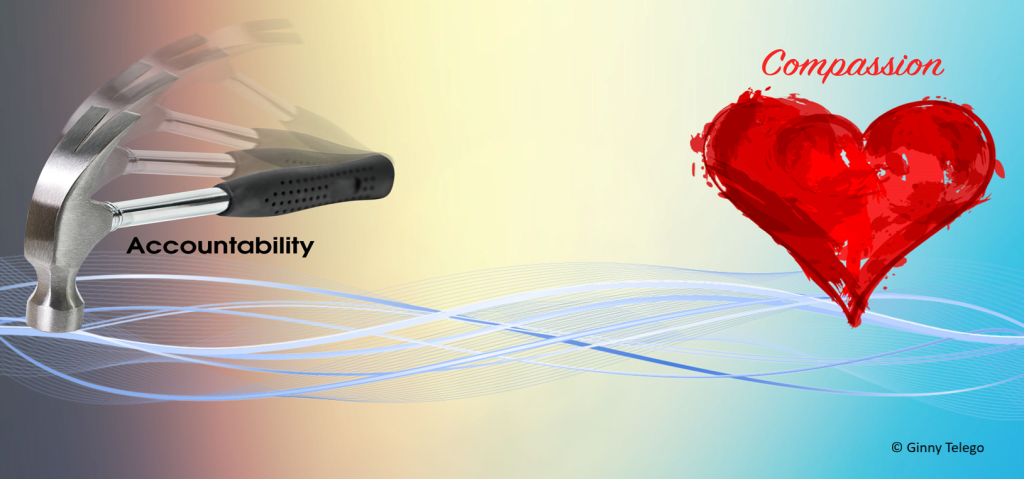Absolutely. Parents do it every day. Organizational leaders do it every day.

In my work doing leadership development coaching in partnership with horses, participants often start out with an assumption that the horses “should” be compliant when asked to do something, like move where a person wants them to go. When the horse is not compliant, the general comments from the people are that the horse is “lazy,” “stubborn,” “just doesn’t feel like moving,” and a plethora of other negative labels.
What is it that causes us to have the belief that the horse should be compliant to our request? Are we requesting or are we expecting? More importantly, what is the energy behind our communication?
As prey animals, horses are highly attuned to the energy of other beings in their environment. This is a survival technique that is hard-wired into their brains and is how they discern whether something is a threat or not. But did you know that our human brains are also hard-wired to read other peoples’ energy? Think about it. Have you ever walked into a meeting and “sensed” something in the air that made you feel on alert about the purpose of the meeting? When someone walks into your office with a cup of your favorite coffee, your brain immediately starts looking for other signs of the intention of that person.
Expecting compliance from someone is usually accompanied by aggressive energy of some kind – even if we don’t realize we are putting that out. So, is it any surprise that people often respond to a demand for compliance with resistance? Certainly there are situations where compliance with a request is vital for safety – but even in that instance, the person being asked to comply most often picks up that the energy behind the request for compliance is coming from a place of concern as opposed to control.
When we are working with other people, we need to be cognizant of the fact that for some people, being compliant is a dangerous thing to do. Past experiences can create an association in the brain that being compliant puts them at risk of harm, so the brain goes into “threat” mode, which is fight, flight, or freeze. This is where acknowledging a person’s humanity comes in handy.
Leaders are under pressure to get a lot of things right and they often aren’t given the latitude to make a mistake. This pressure to get things done can come across as “do what I say” and when the response isn’t what the leader expects, there is a propensity to increase the force of their energy to get compliance. While compliance may happen in that instance, over time, the person being asked to comply will eventually reach their tolerance limit and end up resisting in a way that can be interpreted as oppositional.
So how can a leader learn to balance being “tough” with acknowledging someone’s humanity in the process of accomplishing strategic goals?
- Shift from compliance to connection. This doesn’t mean a leader has to become “soft.” It does mean a leader should take a moment to think about how their request (both verbally and non-verbally) is being made. I have watched leaders who expected compliance from a horse shift their interaction to one of trying to understand what the horse needed from them to feel safe; which then led to the horse willingly following the leader where they wanted to go – without any physical attachment to the horse (halter, leadrope, etc…).
- Seeking understanding doesn’t equal weakness. Seeking to understand why someone may not be doing what is asked is not a sign of weakness. In fact, it’s a sign of strength because it means a leader is not threatened by asking what can be done differently. Instead of labeling someone as “lazy, stubborn, oppositional, etc…” ask if they understand what you are asking and why it’s important to the overall goal. Listen with the purpose of understanding so you can shift what and how you are communicating to get the outcome you desire.
- Acting “tough” will almost always create strong resistance. Learn to practice compassionate accountability. This is a capability that separates good leaders from great leaders and can build trust in people in ways that will amaze you. Just like it sounds, compassionate accountability is the ability to quickly move on a continuum between compassion and accountability in communicating what you need and expect from your team members. For a more in-depth look at compassionate accountability, check out this short video.
The best leaders I’ve had the privilege of working with had the ability to be clear about their expectations while also understanding that I would be most productive when I felt respected as a human being. In these times of volatility, uncertainty, complexity and ambiguity, balancing compassion with accountability is a capability that leaders, and the people they are responsible for, need more than ever.
Ginny Telego is the President and Chief Facilitator at The Collaboration Partners, a consulting firm that focuses on partnering with horses to offer experiential leadership and team development. A life-long horse addict with a Master’s Degree in Business Psychology, she is passionate about helping people become courageous leaders in their organizations and communities by learning from the wisdom of the herd.
